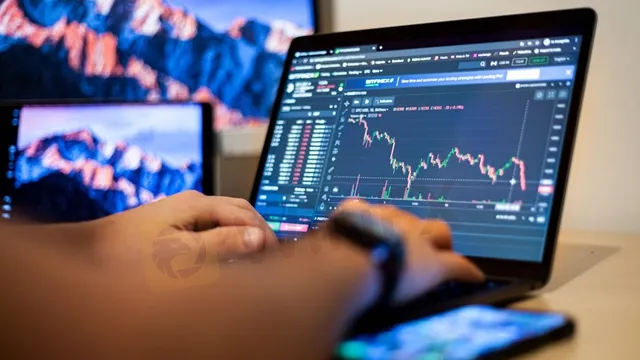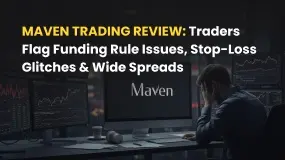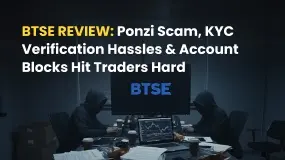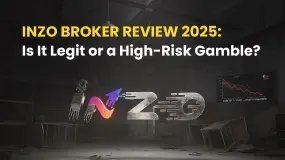简体中文
繁體中文
English
Pусский
日本語
ภาษาไทย
Tiếng Việt
Bahasa Indonesia
Español
हिन्दी
Filippiiniläinen
Français
Deutsch
Português
Türkçe
한국어
العربية
How and When to Buy or Sell in Forex Trading?
Abstract:If you have a preliminary understanding of the foreign exchange(forex) market and can't wait to place your first order?

Before you enter your first trade, it's important to learn about currency pairs and what they signify.
In this article, we will talk about the meaning of base and quote currencies and also the right way to read the symbols. Let's explain how exactly this buying and selling happens in the Forex market.
What is a Base & Quote Currency?
A base currency is the first currency listed in a forex pair, while the second currency is called the quote currency. Forex trading always involves selling one currency in order to buy another, which is why it is quoted in pairs – the price of a forex pair is how much one unit of the base currency is worth in the quote currency.
Each currency in the pair is listed as a three-letter code, which tends to be formed of two letters that stand for the region, and one standing for the currency itself. For example, GBP/USD is a currency pair that involves buying the Great British pound and selling the US dollar.
Let's see the example,

According to the definition of the base"e currency, in the above example, the currency listed first on the left of the slash (“/”) is called the base currency (GBP in this graph), while the second on the right of the slash (“/”) is called the quote currency (USD in this graph). It indicates how much of the quote currency is needed to purchase one unit of the base currency. If GBP/USD is trading at 1.35662, then one pound is worth 1.35662 dollars.
How to Understand Base & Quote Currency?
In the example above, you have to pay $1.35662 for 1 pound; you will get $1.35662 when you sell 1 pound.
If the pound rises against the dollar, then a single pound will be worth more dollars and the pair's price will increase. If it drops, the pair's price will decrease. So if you think that the base currency in a pair is likely to strengthen against the quote currency, you can buy the pair (going long). If you think it will weaken, you can sell the pair (going short).
Go Long & Go Short
When referring to forex trading, you should decide whether you intend to buy or sell. Then we will first talk about the term “go long and go short”.
Going long - a basic term in trading, which refers to the “buying” of an seets;
Going short - a basic term in trading, which refers to the “selling”.
If you choose to buy (which means buying the base currency and selling the quote currency), you expect the base currency to appreciate and then you sell at a higher price. In trader parlance, this is called “going long” or taking a “long” position. Just remember: going long means buying.
If you choose to sell (which means selling the base currency and buying the quote currency), you expect the base currency to depreciate and then you will buy at a lower price. This is known as “shorting” or taking a “short” position. Just remember: going short means selling.
You can choose go long or go short.
Bid (buy) prices & Ask (sell) prices
Currency pairs are quoted based on their bid (buy) prices and ask prices (sell). The bid price is the price that the forex broker will buy the base currency from you in exchange for the quote currency. This means that the bid price is the best price you (the trader) will sell to the market.
The ask price is the price that the broker will sell you the base currency in exchange for the quote currency. This means the ask price is the best price you can get from the market.
When you buy a currency pair from a forex broker, you buy the base currency and sell the quote currency. Conversely, when you sell the currency pair, you sell the base currency and receive the quote currency.
In most cases, the bid price is below the ask price, and the difference between the two is the “spread” earned by the broker.

In the EUR/USD quoted above, the bid price is 1.17123 and the ask price is 1.17142. Take a look at how this broker can simplify your trading.
If you want to sell euros, click “Sell” and you will sell €1.17123. To buy euros, click 'Buy' and you will buy €1.17142.
Now, when should we buy and sell currency pairs?
When to Buy & Sell Currency pairs?
Buying and selling foreign exchange (forex) is a fascinating topic. It includes knowing what to buy and sell and when to buy and sell it. Finally, knowing how much buying and selling there is in the forex market helps to put everything in perspective.
In the following examples, we will use the most basic analysis to help us decide whether to buy or sell a particular currency pair.
1. Currencies we can Buy, Sell, and Trade On The Forex
To keep things ordered, most providers split pairs into the following categories:
Majors: The majors feature the largest traded volumes on the forex and are paired with the worlds reserve currency the USD. The major pairs are the EUR/USD, GBP/USD, USD/CHF, USD/CAD, USD/JPY, AUD/USD, and the NZD/USD.
Minors: Minor pairs are those that do not include the USD. Some of the most popular are the EUR/GBP, EUR/AUD, CHF/JPY, and GBP/CAD. Minor pairs are often referred to as “crosses,” as the USD is absent from the exchange.
Exotics: Exotics are less commonly traded, featuring comprehensive bid/ask spreads and enhanced volatility. Examples include the USD/HKD, JPY/NOK, and GBP/ZAR.
2. Buy & Sell Currencies
EUR/USD
The base currency is EUR and USD is the quote currency.
If you think the US economy is going to keep getting worse, which is bad for the dollar, you can enter market and buy EUR/USD. It means you'll go long the euro and go short the dollar. On the other hand, if you think the US economy will continue to improve, the dollar will rise and the EUR/USD will fall, you can enter market and sell EUR/USD.
Let's see the example to figure out how and when to buy or sell EUR/USD.
In this example, we are plan to buy the EUR/USD. If the EUR goes up in value relative to the USD once the trade is sold, you could have made a profit (depending on commission and other fees). A trader in this example would be buying the EUR and selling the USD at the same time. As an example, if the EUR/USD pair was bought at 11300 and the pair moved up to 11504 at the time that the trade was closed/exited, the profit on the trade would have been 204 pips. This is shown in the chart below.

USD/JPY
The base currency is EUR and USD is the quote currency.
If you think the Japanese government will pursue a “weak yen” policy, then you can go long USD/JPY, which indicates that you expect the currency pair to rise.
Similarly, if you think that Japanese investors are converting all their dollars from US financial markets into yen, or that Japanese multinationals are repatriating their earnings, then that could put pressure on the dollar to fall and the yen to strengthen. At this point, you can enter market and sell USD/JPY.
GBP/USD
The base currency is GBP and USD is the quote currency.
If you think the UK economy will continue to grow and outperform the US economy for a long time, then you can expect the UK monetary authority is carrying a tightened policy and the pound is going to rise, and you can enter market and buy GBP/USD.
On the other hand, if you think the UK economy is in recession and the US economy is growing, you can enter market and sell GBP/USD.
Buy & Sell Currencies in Common Trading Strategies
As one's trading strategy varies, so how can one decide when to buy and sell currecy pairs? That answer is complex. Nonetheless, we list various tried-and-true methods to help you time the market properly. Below are the three primary types of trading and a few forex buy & sell tips:
Trend: Trend traders buy and sell forex pairs in concert with a directional move in exchange rates. To accomplish this task, traders use tools such as Fibonacci retracements, moving averages, and momentum oscillators to decide when to join a prevailing trend. If the indicators are deemed valid, the trader buys to enter a bullish trend and sells to enter a bearish trend.
Reversal: In contrast to trend following strategies, reversals involve identifying a market's periodic top or bottom. To identify a potential market entry point, technical indicators are frequently used to buy, sell and trade reversals. A few examples are Stochastics, candlestick patterns, and moving average crossovers. Upon a currency pair becoming “overbought” or “oversold”, a reversal trade is then executed. This is done through buying against a bearish trend and selling against a bullish one. However, it's important to remember that they can be tricky to execute and are at higher risk.
Range: A range-bound market is one that is trading within an established periodic upper and lower extremity because of the lack of a prevailing trend. However, many traders prosper through focussing on range-bound markets. One common way is through implementing reversion-to-the-mean strategies. When adhering to a reversion-to-the-mean methodology, buying and selling currency pairs is done contrary to an established top or bottom. If successful, selling near a market's top or buying near the bottom will be profitable as price rejects the extreme and revisits an average level.

Disclaimer:
The views in this article only represent the author's personal views, and do not constitute investment advice on this platform. This platform does not guarantee the accuracy, completeness and timeliness of the information in the article, and will not be liable for any loss caused by the use of or reliance on the information in the article.
Read more

Maven Trading Review: Traders Flag Funding Rule Issues, Stop-Loss Glitches & Wide Spreads
Are you facing funding issues with Maven Trading, a UK-based prop trading firm? Do you find Mavin trading rules concerning stop-loss and other aspects strange and loss-making? Does the funding program access come with higher spreads? Does the trading data offered on the Maven Trading login differ from what’s available on the popular TradingView platform? These are some specific issues concerning traders at Maven Trading. Upset by these untoward financial incidents, some traders shared complaints while sharing the Maven Trading Review. We have shared some of their complaints in this article. Take a look.

BTSE Review: Ponzi Scam, KYC Verification Hassles & Account Blocks Hit Traders Hard
Have you lost your capital with BTSE’s Ponzi scam? Did the forex broker onboard you by promising no KYC verification on both deposits and withdrawals, only to be proven wrong in real time? Have you been facing account blocks by the Virgin Islands-based forex broker? These complaints have become usual with traders at BTSE Exchange. In this BTSE review article, we have shared some of these complaints for you to look at. Read on!

Amillex Global Secures ASIC Licence for Expansion
Amillex Global gains ASIC AFSL licence, boosting FX and CFDs credibility. Expansion targets Asia, Australia, and institutional trading growth.

Inzo Broker Review 2025: Is It Legit or a High-Risk Gamble?
When you ask, "Is inzo broker legit?" you want a clear, straight answer before putting your money at risk. The truth about Inzo Broker is complicated. Finding out if it's legitimate means looking carefully at its rules, trading setup, and most importantly, the real experiences of traders who have used it. The broker shows a mixed picture - it has official paperwork from an offshore regulator, but it also has many user warnings about how it operates. This review gives you a fair and fact-based investigation. We will break down all the information we can find, from company records to serious user complaints, so you can make your own clear decision.
WikiFX Broker
Latest News
Forex Expert Recruitment Event – Sharing Insights, Building Rewards
Admirals Cancels UAE License as Part of Global Restructuring
Moomoo Singapore Opens Investor Boutiques to Strengthen Community
OmegaPro Review: Traders Flood Comment Sections with Withdrawal Denials & Scam Complaints
An Unbiased Review of INZO Broker for Indian Traders: What You Must Know
Is Fyntura a Regulated Broker? A Complete 2025 Broker Review
PINAKINE Broker India Review 2025: A Complete Guide to Safety and Services
Is Inzo Broker Safe or a Scam? An Evidence-Based Analysis for Traders
Is Uniglobe Markets Legit? A 2025 Simple Guide to Its Safety, Services, and User Warnings
Is Forex Zone Trading Regulated and Licensed?
Currency Calculator



